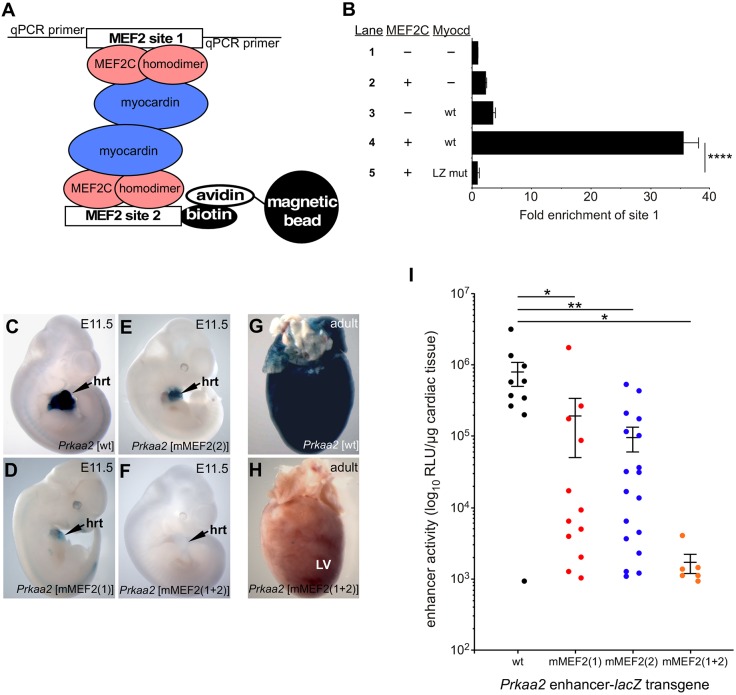Fig. 4.
Bridging of MEF2C-bound MEF2 sites by myocardin-935. (A) Schematic of the in vitro pull-down assay. (B) qPCR detection of co-precipitated MEF2 site 1 after incubation with biotinylated MEF2 site 2 in the presence of reticulocyte lysate control (lane 1), MEF2C alone (lane 2), myocardin-935 (wt) alone (lane 3), MEF2C plus myocardin-935 (lane 4), or MEF2C plus a leucine zipper mutant form of myocardin-935 (LZ mut) (lane 5). Results are presented as mean fold enrichment over the reticulocyte lysate control+s.d. ****P<0.0001, two-way ANOVA with Bonferroni's post-hoc test. (C-H) The MEF2 sites in the Prkaa2 cardiac enhancer act synergistically in vivo. The wild-type Prkaa2[931]-lacZ transgenic reporter (C) and versions containing mutations in MEF2 site 1 (D), site 2 (E) or both MEF2 sites (F) were used to generate multiple independent transgenic lines or F0 embryos, and representative E11.5 embryos are shown. hrt, heart; LV, left ventricle. (G,H) The presence of both MEF2 sites is required for Prkaa2 enhancer activity in the adult heart. (I) Quantitation of β-galactosidase activity in E11.5 hearts from each of the Prkaa2[931]-lacZ transgenic reporter constructs shown in C-F. Each point on the graph represents a single embryonic heart from an independently generated transgenic embryo. Data are expressed as mean RLU/µg of excised heart tissue+s.e.m. Note the log scale on the y-axis. *P<0.05, **P<0.01, two-way ANOVA with Bonferroni's post-hoc test.

